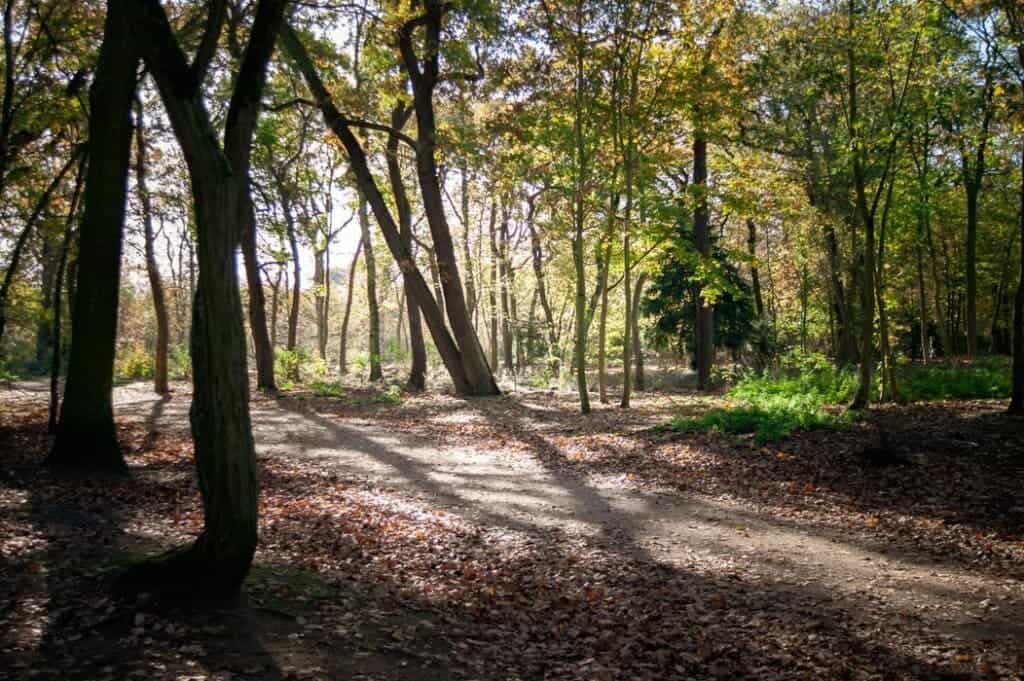More than half of the European forest biomass could be lost due to climate-driven disturbances, a new study reports, and chief among the rising problems are pests.

“Natural disturbances – large pulses of tree mortality that originate from climate-related abiotic and biotic agents such as fires, strong winds or insect outbreaks – represent serious peril for maintaining productive forests. These have intensified globally over the last decades and are expected to further rise in view of climate change,” lead author Giovanni Forzieri tells ZME Science.
Climate drivers influence the vulnerability of forests to natural disturbances, says Forzieri. Forzieri and colleagues analyzed the long-term variations of vulnerability over the 1979-2018 period. They looked at three major disturbances: fire, uprooting by wind (windthrows), and insect pest outbreaks, measuring vulnerability as the amount of forest biomass that is lost following a given disturbance.
“The experiment performed is designed to detect and isolate the influence of climate change on vulnerability over the last four decades. We found that at European level there is no substantial trend in forests’ vulnerability to fires and windthrows and its dynamics appear dominated by the large interannual variability in climate.”

The team found that about 33.4 billion tonnes of forest biomass (60% of European forests) could be seriously affected by these disturbances, with particularly vulnerable areas in both southern and northern Europe.
Different areas showed different vulnerabilities to the analyzed threats, Forzieri explains. Forests in cold climates of Finland, northern European Russia and the Alps, and to some extent warm-dry forests in the interior of the Iberian Peninsula, emerge as particularly fragile ecosystems, but the overall picture is complex.
“Locally significant positive trends in vulnerability to fires appear in Iberian Peninsula, Italy, southern France and parts of Belarus and Ukraine, and are associated with an increase in water stress. Opposite trends occur mostly in Greece, Turkey, eastern Europe, northern Europe and European Russia. Positive trends in vulnerability to windthrows are evident in the Balkan countries and parts of Portugal and Norway, following increases in precipitation, snowfall and wind speed, whereas opposite trends appear mostly in central Europe and inland territories of Norway.

However, the one threat where things were clearer was pests. Most areas in Europe are showing increased vulnerability to insect outbreaks, and this is almost entirely due to climate change.
“In contrast to fires and windthrows, the vulnerability to insect outbreaks at European level grew substantially in response to changing climate conditions, particularly from 2000 onwards. Most of Europe shows statistically significant increasing trends in vulnerability to insect outbreaks with local trend exceeding 0.2 % year-1 in north-eastern Fennoscandia and northern European Russia. Such a rise in vulnerability appears largely driven by the increase in temperature, which represents the dominant factor in 91% of the area.”
The team argues that a temperature tipping point was reached in 2000, drastically reducing forest resilience to pest outbreaks. Subsequent temperature rises have reduced forests’ defense mechanisms even more, making them even more vulnerable to outbreaks. If no adaptation measures are taken, we can expect the threat to forests to increase, researchers say.
“To quantify the future evolution of these disturbances and their impact on forest we need to integrate the future evolution of climate and society as well. We are working on this issue and we will soon submit a new article on the projected risk of forest disturbances in Europe,” Forzieri adds.
Planetary mechanisms

The study only looked at Europe, but it’s likely that similar mechanisms are taking place in other parts of the planet. This mechanism could have global consequences, creating a feedback loop that further accelerates climate change: rising temperatures affect forests which in turn absorb less CO2, which in turn drives climate change, and so on. There are already “several cases around the globe”, says Forzieri.
“Consequently, key forest services, such as carbon sequestration and biophysical cooling, could be seriously affected in the near future. A weakening of the carbon sink would further destabilize the climate system. This could push the Earth system across critical planetary boundaries and potentially lead to dramatic consequences for human societies.”
Land Surface Models (LSMs) – the land component of Earth System Models used to predict future climate trajectories – are starting to incorporate more complex representations of forest disturbances, but they still only capture a part of this underlying complexity due to our incomplete understanding of these ecological processes. Studies such as this one can help fill in those gaps and improve our understanding of global climate mechanisms.
“Our findings, which are based on a purely data-driven approach, may serve as a benchmark for LSMs to improve their capacity to represent natural disturbances and ultimately enhance the reliability of future land-climate predictions.”
Forzieri also thinks we need to clarify what we mean about risk and adaptation to forest disturbances. If we want to develop sustainable adaptation strategies, we need to integrate all risk components such as hazard, vulnerability and exposure.
“Hazard represents the occurrence of the agent affecting the forest ecosystems (e.g. insect pest outbreak); exposure refers to the distribution of forest ecosystem services potentially prone to a hazard; and vulnerability expresses the degree to which a forest ecosystem is affected when exposed to a given disturbance.”
“In this study we focus on the vulnerability component quantified in terms of relative biomass losses following the occurrence of a specific hazard (0% means a forest is not vulnerable to the given disturbance, 100% means a forest is completely damaged when exposed to the given disturbance). Therefore, our estimates should not be confused with the overall risk levels, which incorporate in addition to vulnerability also the probability of occurrence of disturbance and the exposure.”
Developing measures only based on vulnerability may potentially lead to maladaptation, with consequent increased damage to forests. Information on vulnerability and its drivers is fundamental but needs to be integrated with hazard and exposure to ultimately derive risk estimates. This is the topic of our forthcoming article.


